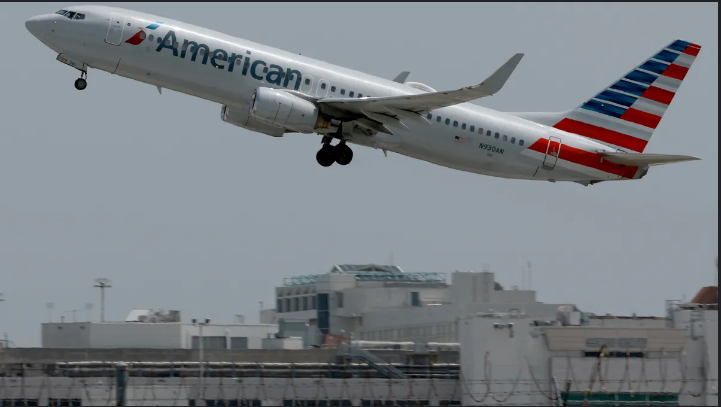In the fast-paced world of aviation,american airlines faces headaches beyond a tech outage technology plays a crucial role in ensuring smooth operations. When systems go down, the repercussions can be immediate and widespread. Recently, American Airlines faced a significant tech outage, but that was only the beginning of a more extensive set of problems. The airline industry giant continues to grapple with issues far beyond the glitch in its IT infrastructure. From mounting operational challenges to customer dissatisfaction and regulatory scrutiny, American Airlines finds itself in turbulent skies.
The Impact of the American Airlines Tech Outage
Technology is the backbone of modern airlines, from booking systems to flight management. When American Airlines experienced a tech outage, it disrupted services across the board. Thousands of flights were delayed or canceled, leaving passengers stranded and frustrated. Yet, while the outage was severe, the airline’s headaches stretch far beyond this isolated incident.
The tech outage exposed weaknesses in American Airlines’ infrastructure, highlighting the airline’s reliance on aging technology. Passengers dealt with not just delays but the uncoordinated efforts of staff to provide updates. The outage was a tipping point, signaling deeper operational concerns that plague one of the largest airlines in the world.
Aging Infrastructure and Operational Failures
American Airlines’ tech outage pointed to more significant issues related to aging infrastructure. Airlines like American have been criticized for not investing enough in their backend systems. The technology that supports scheduling, maintenance, and customer service is outdated and susceptible to failures.
A critical issue lies in the airline’s fragmented IT system, which lacks the seamless integration needed for efficient operations. While updating this system requires significant investment, the longer it remains neglected, the higher the likelihood of future disruptions. Moreover, these technical problems aren’t just about inconveniencing passengers—they lead to costly delays, missed connections, and a cascading effect across the entire aviation ecosystem.
Customer Service Struggles Intensify
Even before the outage, American Airlines had been struggling with customer satisfaction. In an industry where competition is fierce, and consumers expect high standards, American has often fallen short. The tech outage worsened these struggles, exposing gaps in how the airline communicates with its customers.
Many passengers voiced frustration over the lack of timely updates during the outage. While American Airlines scrambled to restore service, customers were left in the dark for hours. This communication gap only further eroded trust. With social media amplifying the complaints, the airline’s public image took another hit. The episode highlighted how far behind the airline is when it comes to customer service infrastructure, even outside of technology.
Flight Delays and Cancellations: The New Normal?
Beyond the tech outage, American Airlines has been grappling with a wave of flight delays and cancellations. While some of these disruptions are attributable to external factors like weather, many stem from internal inefficiencies. Overbooking, crew shortages, and mismanagement of resources have become all too familiar for the airline.
This operational sluggishness not only inconveniences passengers but also puts a strain on the company’s bottom line. When flights are delayed or canceled, the costs stack up quickly—from compensation for passengers to additional logistical expenses. With American Airlines frequently finding itself in the headlines for operational problems, the company risks losing its competitive edge in the market.
Labor Disputes and Crew Shortages Compounding Issues
One of the less publicized but critical challenges facing American Airlines is labor unrest. The airline has been entangled in disputes with its pilots, flight attendants, and ground crew over pay, working conditions, and staffing levels. These disputes have occasionally spilled into public view, with walkouts and strikes impacting service.
Crew shortages exacerbate this issue, with many employees reporting burnout from being overworked. As a result, flight cancellations and delays have become more frequent, further diminishing customer experience. The airline’s strained relationship with its workforce is another area that needs urgent attention if it hopes to recover its reputation.
The Regulatory Pressures Mount
Regulatory agencies have also been keeping a close eye on American Airlines following the tech outage. The Federal Aviation Administration (FAA) and Department of Transportation (DOT) have imposed stringent guidelines on airline operations. They are particularly focused on how airlines manage delays, cancellations, and customer complaints.
Given the frequency of American Airlines’ recent disruptions, regulators may push for stricter oversight. Any additional regulations could put more financial pressure on the airline, which is already facing challenges in meeting operational and financial targets. Compliance will require significant investment in upgrading infrastructure and customer service systems to avoid further penalties.
Financial Turbulence in a Competitive Market
While American Airlines’ tech outage was a significant issue, the company’s financial struggles point to deeper problems. The airline industry is notoriously competitive, with fluctuating fuel prices, unpredictable demand, and rising labor costs constantly putting pressure on margins. American Airlines has been no exception, and recent quarterly reports have shown a downward trend in profitability.
The airline’s high debt load has also become a point of concern for investors. While American Airlines made strategic investments in new aircraft and route expansions, the financial burden from these choices has grown heavier in the face of operational disruptions. Balancing its financial obligations with the necessary investments in technology and customer service will be a delicate act for the airline.
Challenges in Maintaining Industry Leadership
American Airlines, once a symbol of industry leadership, now faces stiff competition from low-cost carriers and other major airlines. Competitors like Delta and Southwest have invested heavily in both technology and customer service, and passengers have taken note. In a world where price and convenience are paramount, American Airlines risks falling behind if it does not swiftly address its issues.
The challenges facing the airline are multi-faceted: the tech outage was only a symptom of broader operational, financial, and regulatory struggles. For American Airlines to retain its place as a market leader, it must invest in technology, improve customer service, and resolve labor disputes. Otherwise, it will continue to face growing dissatisfaction from passengers and pressure from regulators and competitors alike.
Lessons Learned from the Tech Outage
While the tech outage was an unfortunate event, it provided American Airlines with a clear lesson: its infrastructure needs to be revamped. Investing in modern, scalable IT systems should be a top priority. Not only will this help prevent future outages, but it will also improve overall operational efficiency.
The outage also underscored the need for better crisis management strategies. Transparent, timely communication with passengers can go a long way in maintaining customer trust, even during disruptions. American Airlines must learn to manage such situations more effectively, both in terms of technology and human interaction.
What’s Next for American Airlines?
As American Airlines works to move past its recent challenges, the road ahead will be filled with obstacles. The airline must juggle the need to upgrade its aging infrastructure, resolve labor disputes, and improve its customer service. All these changes will require time, resources, and strategic planning.
However, there is also opportunity in these challenges. If American Airlines can turn its struggles into areas of improvement, it could emerge stronger. By modernizing its operations and enhancing its customer experience, the airline could regain the trust of its passengers and reclaim its position as a top contender in the industry.
FAQs
What caused the tech outage at American Airlines?
The tech outage was likely caused by a failure in the airline’s aging IT infrastructure, which relies on outdated systems. This led to widespread delays and cancellations.
How is American Airlines handling the fallout from the outage?
American Airlines is working to address the situation by improving its technology and customer communication. However, it still faces ongoing challenges related to operational efficiency and customer satisfaction.
Are flight delays common at American Airlines?
Yes, American Airlines has experienced a significant number of delays and cancellations in recent months, often due to crew shortages, operational mismanagement, and external factors like weather.
How has the tech outage affected American Airlines’ reputation?
The tech outage has further eroded American Airlines’ reputation, especially in the eyes of frustrated passengers. Social media complaints and poor customer service have amplified the issue.
What are the key operational challenges American Airlines faces?
Apart from the tech outage, American Airlines is grappling with aging infrastructure, labor disputes, crew shortages, and increased regulatory pressures.
Can American Airlines bounce back from these challenges?
With the right investments in technology and a renewed focus on customer service, American Airlines has the potential to recover. However, it will require significant effort and strategic planning to overcome these obstacles.
Conclusion
The tech outage that recently hit American Airlines was more than just a momentary glitch—it was a wake-up call. The airline faces a long list of operational, financial, and reputational challenges that must be addressed to regain its footing in a highly competitive industry. By investing in technology, resolving labor disputes, and focusing on customer satisfaction, American Airlines has a chance to turn the tide. However, failure to address these issues could leave the airline grounded in more ways than one.











